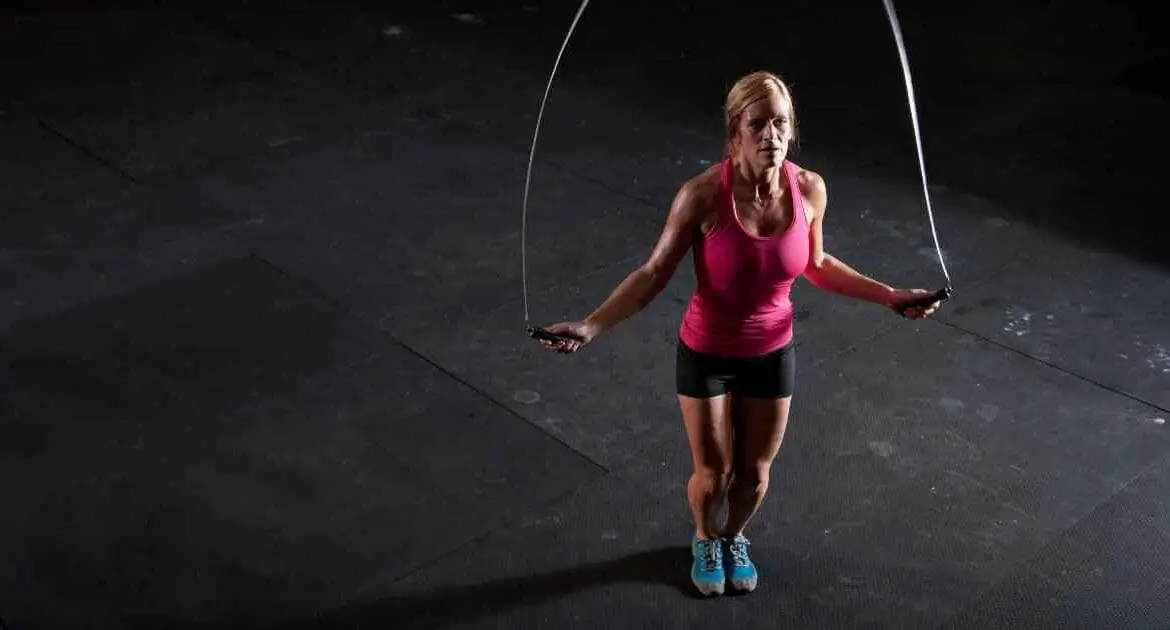The jump rope vs cycling debate has been going on forever. Both these major cardio exercises have split fitness enthusiasts into two parties. One firmly believes in cycling’s unmatchable benefits and the other swears by their jump rope workouts.
In any case, if you want to improve your cardiovascular health or overall fitness level, these options have probably left you feeling confused. What are the differences between both forms of exercise? Will combining them in a full-body workout affect you in any way?
All these troublesome questions have probably even made you doubt your decision to exercise.
Today, we’ll dive deep into this topic and compare both these exercises in detail. We’ll discuss everything from fundamental differences to muscle growth and much more. So read on to learn more.
What you will learn
Jump Rope vs Cycling – The Key Differences
Both jump rope and cycling are low-impact exercises. It means that they do not put a lot of strain and load on your muscles while exercising. Almost anyone can incorporate these into their regular workout routines.
However, there are some noteworthy differences between both. Let’s explore them below.
What is Jump Rope?

Jump rope as an exercise looks pretty similar to what you probably did as a kid. The rope swings continuously, and the participant has to jump as it passes under their feet and over the head. Some people might call it skipping rope.
It engages all of your body muscles from head to toe, so you can enjoy a full-body workout. This physical activity has a low risk of injury too. That makes the perfect choice for athletes, fitness enthusiasts, children, and even the elderly.
Jumping rope is also a fun way to activate your body without going to the gym. You can practice some cool tricks in your backyard or in a local park.
Health Benefits of Jump Rope
- Makes You Agile: Jumping rope forces you to focus on picking your feet up at the right time. If you jump too early or too late, the rope will cause you to trip. This can help improve agility.
- Increases Bone Density: Although jump rope doesn’t put too much of a load on your body, it is still a weight-bearing exercise. The jumping causes you to work against gravity, which creates a bone-strengthening effect on your body. This promotes growth, resulting in stronger bones.
- Enhances Heart Health: Jumping ropes proves to be amazing for cardiovascular health. It lowers your resting heart rate, reverses bad cholesterol, and reduces your heart disease risk factor.
People who are heart patients or obese should definitely include it in their fitness routine. However, make sure to consult your doctor beforehand.
How to Jump Rope for Exercise?
- Hold the jump rope and let your hands rest by your side. They should be at hip level.
- Slowly rotate the wrists to swing the jump rope under your feet.
- Jump as it passes under your feet and moves over your head. Make sure both of your feet move at the same time to avoid tripping.
- Repeat the process for as long as you can.
What is Cycling?

Cycling is the sport of riding a bicycle. There are different forms of cycling: road cycling, pursuit, and cyclo-cross. Each of these involves different distances and terrains.
However, most people prefer cycling casually in their neighborhood. They may not necessarily do it for fitness purposes. For example, many teenagers and children use bicycles to commute to school.
In any case, the act of riding a bicycle is one of the best cardiovascular exercises. It doesn’t only involve your thigh and leg muscles, but it also engages the upper body.
Your entire body works as you pedal. Even your arm muscles step into action as you try to keep your balance on the road.
Health Benefits of Cycling
- Builds Stamina: Cycling is an aerobic exercise. It means that your blood vessels, heart, and lungs all get put to work. This causes you to breathe deeper, which increases your stamina and energy.
- Improves Posture & Coordination: As you try to remain upright, cycling helps improve your overall posture and gait. It straightens your back and relaxes your shoulders into their natural position. Your coordination also improves as your muscles work together to keep you from falling.
- Helps Relieve Stress: When you cycle, the focus is only on the road ahead and your ability to maintain your balance. It helps you clear out the day’s stress and relax. The activity also promotes the release of endorphins, which are happy hormones in the body.
How Do Beginners Start Cycling?
- Choose the right bicycle for your height.
- Practice moving the pedal until you gain confidence.
- Place both feet on the pedals and start pedaling immediately.
- Cycle in a straight line.
- Repeat this until you can move the bike without losing balance.
Does Jump Rope Burn More Calories Than Cycling?
A calorie refers to the unit of energy that we collect from food consumption. Burning calories is a great way to lose weight and prevent obesity. Surprisingly, jump rope beats cycling when it comes to the number of calories burned.
On average, jumping ropes help burn 700-calories per hour, while cycling burns up to 650-calories. The measurement is pretty close, but the jump rope workouts still stay a step ahead. However, the actual value all depends on the exercise intensity and your body weight.
A heavier person would burn far more calories than a skinnier person when doing the same exercise. Similarly, increasing the intensity of the exercises can cause the calories to burn much faster. You should consider all of these factors if your goal is to burn the most calories.
Although jump rope will help burn more per hour, it’s best to choose the exercise that you find enjoyable. That way, you will be able to do it longer and burn more calories.
Which Is Better for Building Muscle?

Muscle growth takes time, effort, and consistency. Jump rope is an excellent way to do a full-body workout since it engages muscles present in both the upper and lower body. Typically, it helps build these muscles:
- Quads
- Calf muscles
- Hamstrings and glutes
- Abs
- Forearms/biceps/triceps
- Shoulders
- Back and chest muscles
Cycling activates more of your leg muscles, like quads and glutes. So if you want a more developed lower body, it might be a good idea to start cycling regularly.
Muscle growth also largely depends on the resistance applied. Muscle growth occurs rapidly when you’re pushing the intensity. That is significantly easier to do with cycling.
That said, let’s not forget that both are low-impact and aerobic activities. We’ll need to include actual strength training to develop any noteworthy muscle mass.
You May Also Like: FITNESS AT HOME IDEAS
Frequently Asked Questions
Should I jump rope before cycling?
Jumping ropes is wonderful to warm up your body for more intensive tasks like running and cycling. It strengthens your Achilles tendons, calf muscles, and intrinsic muscles, while also increasing core strength. A quick jump rope warm-up can help improve your cycling.
Is it okay to jump rope every day?
No, jumping rope every day is not recommended. Your body needs time to recover, and overdoing it can cause soreness. The ideal frequency is between 3 to 5 times a week.
Even if you want to practice daily, we recommend keeping the exercise time pretty short. Jump rope for no more than 10 to 15 minutes a session.
How many km should I cycle a day?

Unlike jumping rope, it is okay to cycle daily. You can cover as much as 15km every day. If you cycle at the speed of 30 km/h, it would take you only 30 minutes to do 15km.
However, avoid going too fast as a beginner. It can put you at risk of injuries and accidents.
Final Thoughts
Both jump rope and cycling are great low-impact exercises. They are simple, easy, and beneficial methods of working out for the entire body. The only prominent difference between jump rope vs cycling is that cycling focuses a bit more on the lower body muscles.
If your fundamental purpose is to strengthen the lower body, go ahead with cycling. But if you want the whole body to remain fit and active, jump rope might be better for you. Including both in your workout routine is also a great option.
As always, we suggest you consult a doctor before making any significant changes to your activity level.
